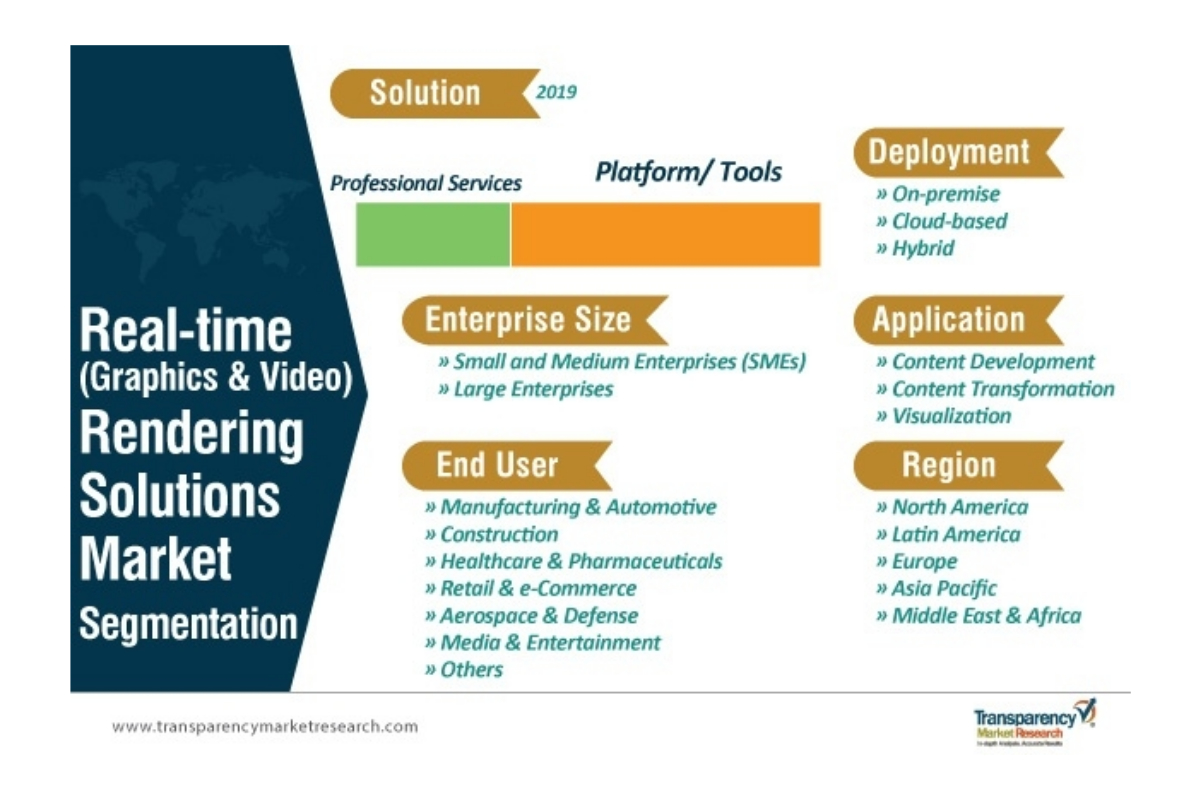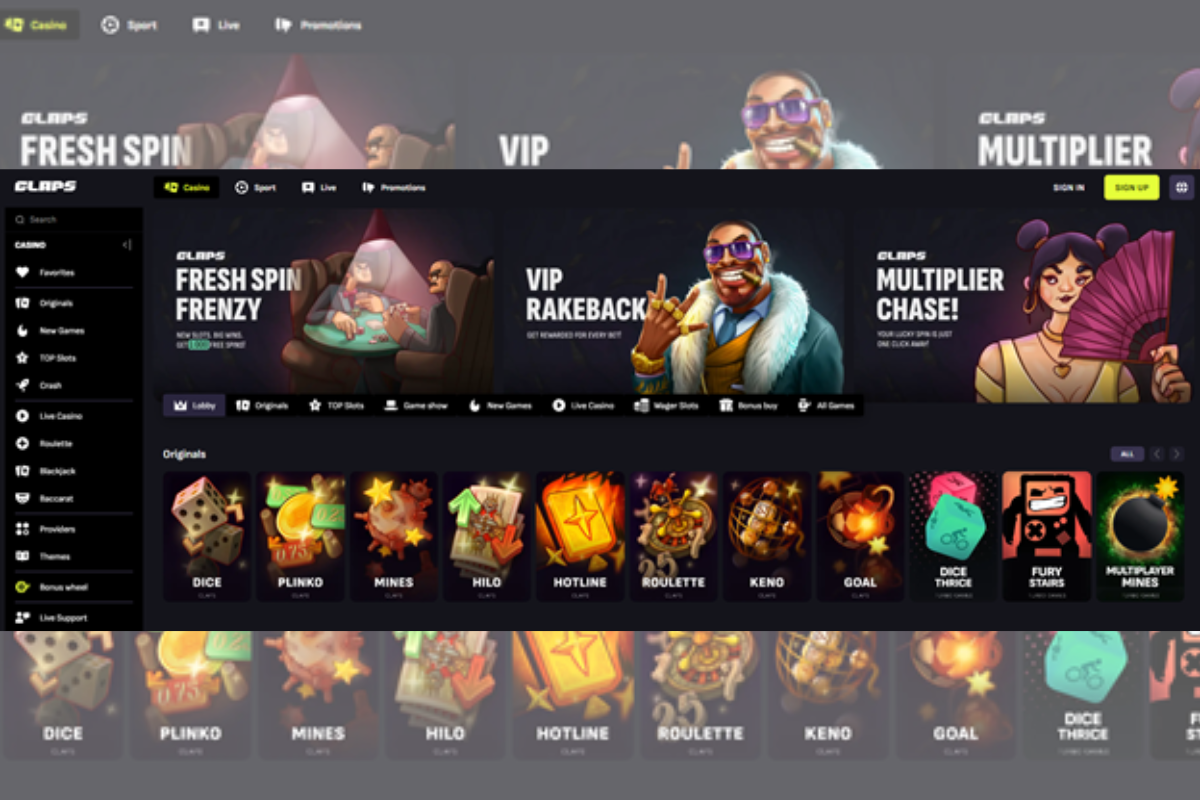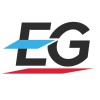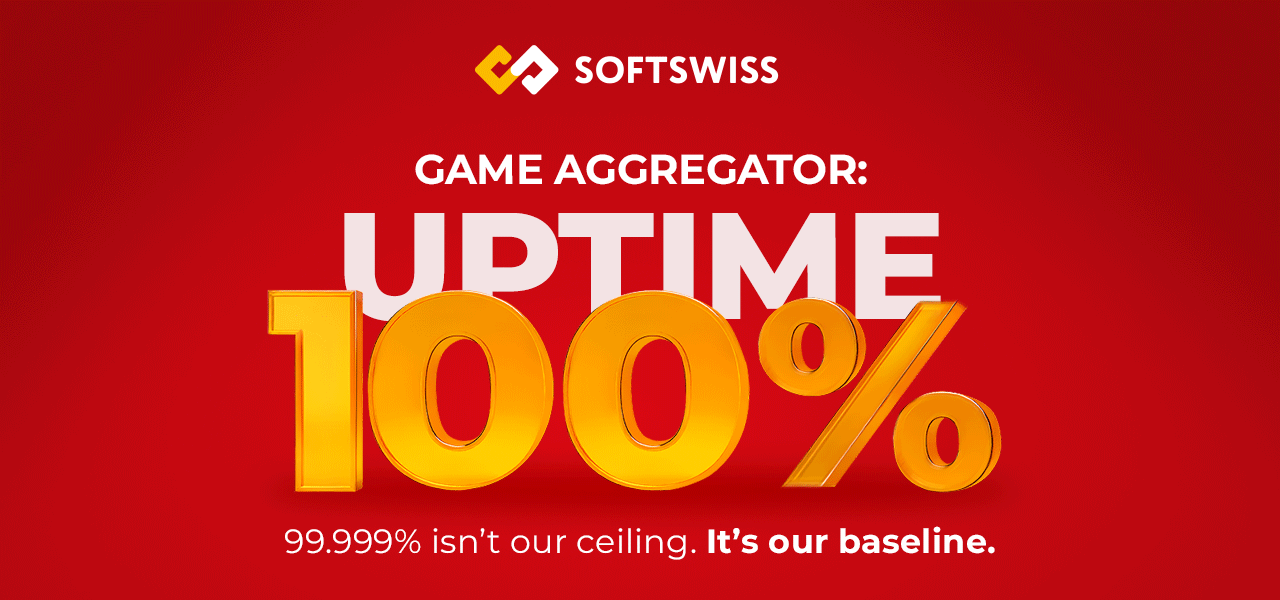Industry News
Widespread Adoption of 3D Content Driving Real-time (Graphics and Video) Rendering Solutions Market

According to a new market report pertaining to the global real-time (graphics and video) rendering solutions market, the global real-time (graphics and video) rendering solutions market is projected to reach a value of ~US$ 4 Bn by 2027, from US$ 1 Bn in 2018, expanding at a CAGR of ~17% from 2019 to 2027. Expansion of the real-time (graphics and video) rendering solutions market can be attributed to the widespread adoption of 3D content among organizations, and less time required for 3D rendering with reduced cost. North America is anticipated to lead the global real-time (graphics and video) rendering solutions market, followed by Europe, during the forecast period.
Industries such as media & entertainment, manufacturing, and automotive have increased the use of 3D content to enable creativity and impact the manner in which thoughts or ideas are rendered and conceptualized. 3D content is widely utilized by various organizations for product design as well as modeling, in order to enable them to generate better graphics. 3D content has emerged as a significant part of the designing process among engineers and architects. Designers, architects, and engineers are focusing more on leveraging 3D rendering software to convert their innovative ideas into design in real-time by exploring several options, making modifications, and creating several versions of their designs. Hence, the widespread adoption of 3D content among organizations is positively impacting the real-time (graphics and video) rendering solutions market, worldwide.
Increasing Demand for Prototyping of New Product Design Across Industries to Provide Opportunity
A prototype is an initial model, sample, or proclamation of a product built to examine a process or an act, or a concept, as a thing to be simulated or learned from. It is a term engaged in diversified context, such as design, semantics, and software programming. Furthermore, a prototype is primarily utilized to assess a new product design in order to improve precision by designers, system analysts, and users. Various manufacturing companies develop prototypes of their new products by employing visualization and 3D rendering software before commencing actual production, and test them across users for acceptability. This trend of prototyping is rising rapidly across industry segments, which, in turn, is likely to boost the demand for 3D rendering software. The demand for prototyping is rising, as enterprises are launching new and innovative products to increase their market share. Hence, the demand for 3D rendering software among industries is expected to positively influence the real-time (graphics and video) rendering solutions market in the near future.
Real-time (Graphics and Video) Rendering Solutions Market: Segment Analysis
The global real-time (graphics and video) rendering solutions market has been segmented based on solution, deployment, enterprise size, application, end use, and region.
In terms of solution, the real-time (graphics and video) rendering solutions market has been segmented into platform/ tools and professional services. The platform/ tools segment is expected to hold a prominent share of the global real-time (graphics and video) rendering solutions market by the end of 2019. The professional services segment is projected to expand at a notable CAGR of ~21% during the forecast period.
Based on deployment, the real-time (graphics and video) rendering solutions market has been divided into cloud-based, on-premise, and hybrid. The on-premise segment is expected to hold the largest market share by the end of 2019. The cloud-based segment is expected to account for the highest CAGR of 19% from 2019 to 2027.
Based on enterprise size, the real-time (graphics and video) rendering solutions market has been bifurcated into small and medium enterprises and large enterprises. The large enterprises segment is expected to hold a notable share by the end of 2019. The small and medium enterprises segment is expected to account for the highest CAGR of 19% from 2019 to 2027.
Based on application, the real-time (graphics and video) rendering solutions market has been divided into content development and content transformation, and visualization. The visualization segment is projected to hold a major share of the market by the end of 2019. The content development segment is estimated to expand at a CAGR of ~19% from 2019 to 2027.
Based on end user, the real-time (graphics and video) rendering solutions market has been divided into manufacturing & automotive, construction, healthcare & pharmaceuticals, retail and e-Commerce, aerospace & defense, media & entertainment. The construction segment is anticipated to account for a notable share of the global real-time (graphics and video) rendering solutions market by the end of 2019. The healthcare & pharmaceuticals segment of the global real-time (graphics and video) rendering solutions market is projected to expand at a prominent CAGR of ~21% from 2019 to 2027.
Real-time (Graphics and Video) Rendering Solutions Market: Regional Outlook
In terms of region, the global real-time (graphics and video) rendering solutions market has been segmented into North America, Europe, Asia Pacific, Middle East & Africa, and South America. North America led the global real-time (graphics and video) rendering solutions market, accounting for a substantial share in 2018, with the U.S. and Canada being the major markets in the region. The real-time (graphics and video) rendering solutions market in Asia Pacific is estimated to expand at a CAGR of ~20% during the forecast period. The real-time (graphics and video) rendering solutions markets in the Middle East & Africa and South America are expected to expand moderately during the forecast period.
Real-time (Graphics and Video) Rendering Solutions Market: Key Players
The research study includes the profiles of leading companies operating in the global real-time (graphics and video) rendering solutions market. Key players profiled in the report include ACCA software, Autodesk, Inc., Avid Technology, Inc., Easy Render, Epic Games, Inc., Idex Solutions Inc., Lumiscaphe, Nanopixel, Promotheus, Silicon Studio Corp, Umbra, and Urender.
These insights are based on a report on Real-Time Rendering Solutions Market by Transparency Market Research.
-

 Bitcoin5 days ago
Bitcoin5 days agoCrypto Casinos EU 2025 – Top 10 European Bitcoin Casino Sites (Updated List)
-

 Compliance Updates5 days ago
Compliance Updates5 days agoGeoLocs and Shufti Join Forces to Streamline Player Onboarding and Compliance
-

 Africa7 days ago
Africa7 days agoAfrica: trends, in-vogue games and innovation to come An exclusive interview with QTech Games’ Head of Region – EMEA, Ekaterina Mayorova
-

 Asia7 days ago
Asia7 days agoSuperGaming Raises $15 Million in Series B Funding
-

 eSports7 days ago
eSports7 days ago2025 PUBG MOBILE Global Championship Details, Format, and Map Changes Revealed at Esports World Cup
-

 Latest News7 days ago
Latest News7 days ago7 Best Crypto & Bitcoin Casinos for August 2025
-

 Asia7 days ago
Asia7 days agoMelBet Announces New Partnership with СPL 2024 Champion Saint Lucia Kings
-

 Latest News6 days ago
Latest News6 days agoBest 10 Trusted Bitcoin & Crypto Casinos for USA August 2025


















